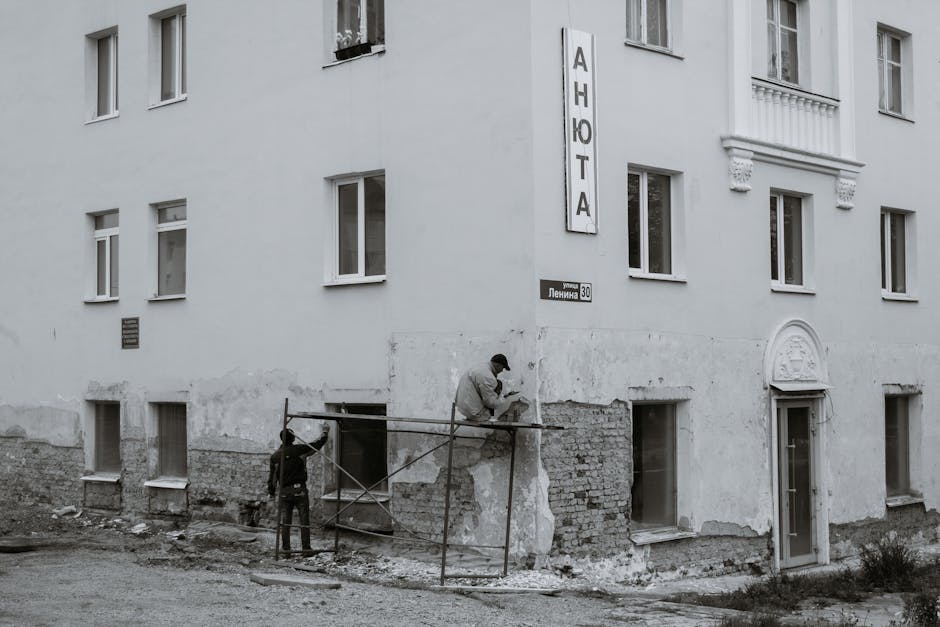Cost to Remove Stucco and Replace with Hardie Board: Top Guide
The cost to remove stucco and replace with Hardie board can vary greatly depending on several factors. Here’s a quick breakdown:
- Stucco Removal: Typically ranges from $12 to $15 per square foot, including disposal fees.
- Hardie Board Installation: Adds an additional $8k to $10k premium over options like vinyl siding, with overall project costs potentially reaching $80,000 for a medium-sized home including siding removal and labor.
Transitioning from stucco to Hardie board is more than just a facelift for your home. It’s about enhancing protection against harsh weather, improving energy efficiency, and boosting the aesthetic appeal. With stucco, improper installation can lead to leaks and mold, causing significant damage over time. Hardie board, known for its durability and resistance to elements, offers a long-term solution that minimizes maintenance costs and maximizes home value.
I’m Jimmy Hertilien, with a robust background in construction and project management. Overseeing successful siding changes has given me deep insights into the costs associated with the cost to remove stucco and replace with Hardie board. This experience allows me to guide homeowners through this complex yet rewarding upgrade process.

Cost to remove stucco and replace with hardie board terms made easy:
Understanding Stucco Removal
Removing stucco is no easy task. It’s labor-intensive and requires specialized equipment to ensure the job is done right. Let’s explore the costs and considerations involved.
Cost Breakdown for Stucco Removal
1. Labor Costs:
Stucco removal is heavy work. It can take a team of professionals several days to complete, depending on the size of your home. Expect to pay $12 to $15 per square foot for labor, which includes the expertise and effort required to safely remove the stucco without damaging the underlying structure.
2. Tools and Equipment:
Specialized tools are needed to remove stucco effectively. This can include everything from pneumatic chipping hammers to dust control systems. These tools ensure the removal process is efficient and safe, but they add to the overall cost.
3. Disposal Fees:
Once the stucco is removed, it needs to be disposed of properly. Disposal fees vary by location but are an essential part of the removal cost. Proper disposal is crucial to avoid environmental fines or penalties.
DIY vs. Professional Stucco Removal
Tools Needed:
If you’re considering a DIY approach, you’ll need to invest in or rent tools like a circular saw, chipping hammer, and safety gear. These tools can be expensive, and using them requires skill.
Safety Concerns:
Stucco removal generates a lot of dust, which can be hazardous if inhaled. Professionals use dust control measures to protect themselves and your home. Without the right precautions, DIY removal can pose significant health risks.
Time Investment:
Professionals can remove stucco quickly and efficiently. For DIYers, the process can take much longer, especially if you’re unfamiliar with the tools or techniques. The time spent might outweigh any potential cost savings.

Choosing between DIY and professional removal boils down to evaluating your skills, time, and ability to handle specialized equipment. While DIY might save money upfront, the risks and potential for mistakes often make professional services the better choice.
By understanding the labor-intensive nature and cost factors involved in stucco removal, homeowners can make informed decisions about their siding projects. Next, let’s explore the benefits of switching to Hardie board and how it compares to other siding options.
Cost to Remove Stucco and Replace with Hardie Board
Switching from stucco to Hardie Board siding is a worthwhile investment for many homeowners. But how much will it cost? Let’s break it down.
Factors Influencing the Cost
Several factors can affect the cost to remove stucco and replace with Hardie Board. These include:
- Home Size: Larger homes require more materials and labor, increasing the overall cost.
- Labor: Skilled labor is essential for both stucco removal and Hardie Board installation. Hiring professionals ensures the job is done correctly, but it comes at a price.
- Materials: Hardie Board itself is a durable and long-lasting siding option, which can be more expensive than other materials. However, its durability often justifies the cost.
- Permits: Depending on your location, you may need permits for the removal and installation process. These can add to the cost but are necessary to comply with local regulations.
Average Costs by Home Size
The cost of removing stucco and installing Hardie Board can vary widely based on the size of your home. Here’s a rough estimate based on different home sizes:
- 1,500 sq ft Home:
- Stucco Removal: $4,500 to $10,500
- Hardie Board Installation: $4,500 to $12,000
- Total Cost: $9,000 to $22,500
- 2,000 sq ft Home:
- Stucco Removal: $6,000 to $14,000
- Hardie Board Installation: $6,000 to $16,000
- Total Cost: $12,000 to $30,000
- 3,000 sq ft Home:
- Stucco Removal: $9,000 to $21,000
- Hardie Board Installation: $9,000 to $24,000
- Total Cost: $18,000 to $45,000
These estimates include both the removal of existing stucco and the installation of Hardie Board siding. The costs can fluctuate based on factors like local labor rates and specific material choices.

Hardie Board offers excellent durability, making it a smart long-term investment. It’s resistant to water, fire, and pests, which can save you money on repairs and maintenance over time. In the next section, we’ll dive deeper into the benefits of Hardie Board siding and how it compares to other materials.
Benefits of Hardie Board Siding
Switching to Hardie Board siding has many advantages. Let’s explore why it’s a top choice for homeowners looking to replace their stucco siding.
Hardie Board vs. Other Siding Materials
Durability: Hardie Board is known for its strength and longevity. Unlike vinyl, which can crack or warp over time, Hardie Board stands strong against the elements. It’s also more durable than wood, which can rot and require frequent maintenance.
Water-Resistant: Hardie Board is highly water-resistant, making it ideal for wetter climates. This feature helps prevent issues like mold and mildew, which can plague stucco and wood siding.
Fire-Resistant: Unlike wood siding, Hardie Board is non-combustible, offering an extra layer of protection for your home. This can be a crucial factor in areas prone to wildfires.
Cost Comparison: While Hardie Board may have a higher initial cost compared to vinyl, its durability and low maintenance can lead to savings over time. Wood siding, on the other hand, often has higher maintenance costs due to its susceptibility to weather damage.
Long-term Savings with Hardie Board
Maintenance Costs: Hardie Board requires less maintenance than both wood and stucco. Its robust nature means fewer repairs and repainting, translating to lower upkeep costs over the years.
Lifespan: With proper installation and care, Hardie Board can last up to 50 years or more. This longevity outpaces materials like vinyl, which may need replacement sooner.
Energy Efficiency: Hardie Board provides better insulation compared to some other materials. This can help keep your home warmer in the winter and cooler in the summer, leading to potential savings on energy bills.
In conclusion, Hardie Board offers a blend of durability, safety, and long-term cost savings that make it a compelling option for homeowners. Next, we’ll explore the installation process and what you need to know before making the switch.
Installation Process for Hardie Board
Installing Hardie Board siding is a significant upgrade for your home. Let’s explore the steps involved and whether you should tackle it yourself or hire professionals.
Professional Installation vs. DIY
Preparation
Before any installation begins, it’s crucial to prepare the exterior walls. This involves removing the old siding and checking for any damage underneath. If you’re doing it yourself, ensure you have the right tools, like a circular saw, and protective gear. Professionals often use specialized equipment that makes the job quicker and safer.
Installation Steps
- Weather Barrier: Start by applying a weather-resistant barrier over the wall sheathing. This protects your home from moisture and adds an extra layer of insulation.
- Cutting and Fitting: Hardie Board needs to be cut to fit the dimensions of your home precisely. Professionals use precise cutting techniques to ensure each piece fits snugly, reducing gaps that could let in water or pests.
- Nailing: Secure each board using corrosion-resistant nails. Proper spacing is key to allowing for expansion and contraction with temperature changes.
- Sealing: Seal all joints and edges with a quality caulk to prevent water penetration and improve the siding’s aesthetic appeal.
Finishing Touches
Once the boards are up, it’s time for the finishing touches. This includes painting the siding with a high-quality exterior paint if it isn’t pre-finished. Professional installers often offer warranties on their work, ensuring peace of mind.
Expert Techniques
Professionals bring expert techniques to the table, ensuring a flawless finish. They have the experience to handle unexpected challenges, like uneven walls or tricky corners, which can be daunting for DIYers.
Time and Warranties
DIY installation can be time-consuming, especially if you’re new to siding work. It might take weeks to complete what professionals can do in days. Hiring experts not only saves time but often includes warranties on both materials and labor. This means you’re covered if any issues arise post-installation.
In summary, while DIY can be a rewarding project for some, professional installation ensures quality, efficiency, and peace of mind. Next, we’ll address some common questions about the process and costs involved in replacing stucco with Hardie Board.
Frequently Asked Questions about Removing Stucco and Replacing with Hardie Board
How much does it cost to replace stucco with Hardie Board?
The cost to remove stucco and replace with Hardie Board varies widely based on several factors, including the size of your home and local labor rates. On average, you might expect to pay between $12 to $15 per square foot for the exterior wall area. This price range includes removal, disposal, and installation costs. For a 3,000 square foot home, the total could range from $36,000 to $45,000, not accounting for any additional costs like painting or permits. Always get multiple quotes from reputable contractors to ensure you’re getting a fair deal.
Can you replace stucco with Hardie Board?
Yes, you can replace stucco with Hardie Board. Many homeowners choose to do this to improve their home’s durability and appearance. Hardie Board is a popular choice because it is not only aesthetically pleasing but also offers significant advantages over stucco. It’s important to hire experienced professionals for this project to ensure the siding is installed correctly and efficiently.
What are the benefits of Hardie Board over stucco?
Hardie Board offers several benefits over traditional stucco:
- Durability: Hardie Board is known for its long-lasting nature. Unlike stucco, it doesn’t crack easily and can withstand harsh weather conditions.
- Water Resistance: While stucco can be prone to moisture issues and subsequent mold, Hardie Board is engineered to resist water and moisture damage effectively.
- Fire Resistance: Hardie Board is non-combustible, providing an extra layer of safety for your home. This is a significant advantage over stucco, which doesn’t offer the same level of fire protection.
- Low Maintenance: Hardie Board requires less maintenance compared to stucco. It doesn’t need frequent repainting or repairs, saving you time and money in the long run.
- Aesthetic Versatility: With a variety of textures and colors available, Hardie Board can mimic the look of wood or other materials, offering more design flexibility than stucco.
These benefits make Hardie Board a smart investment for homeowners looking to improve their home’s exterior.
Next, we’ll explore the installation process in detail, including the steps involved and whether to opt for a DIY approach or hire professionals.
Conclusion
In conclusion, replacing stucco with Hardie Board is a wise investment for homeowners seeking durability, low maintenance, and aesthetic appeal. While the cost to remove stucco and replace with Hardie Board can vary, the long-term benefits often outweigh the initial expense. Hardie Board’s resistance to weather, water, and fire makes it a superior choice for those looking to protect their homes and improve curb appeal.
At Herts Roofing & Construction, we specialize in providing high-quality siding solutions custom to your needs. With our professional installation services, you can rest assured that your home will be in expert hands. Our team is committed to delivering exceptional results, ensuring that your new siding not only looks great but also stands the test of time.
If you’re considering making the switch to Hardie Board or have any questions about your siding options, don’t hesitate to contact us. Visit our NJ professional siding service page for more information or reach out directly to discuss your project. Our friendly and knowledgeable staff is ready to help you every step of the way.
Thank you for considering Herts Roofing & Construction for your siding needs. We look forward to helping you transform your home with the best materials and service in the industry.




